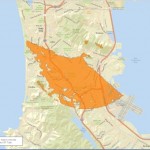Turn on suggestions
Auto-suggest helps you quickly narrow down your search results by suggesting possible matches as you type.
Cancel
- Home
- :
- All Communities
- :
- Industries
- :
- Education
- :
- Education Blog
- :
- Teaching Spatial Concepts with Viewsheds
Teaching Spatial Concepts with Viewsheds
Subscribe
603
0
06-20-2013 11:00 PM
- Subscribe to RSS Feed
- Mark as New
- Mark as Read
- Bookmark
- Subscribe
- Printer Friendly Page
06-20-2013
11:00 PM
I recently posted a set of activities based on using web-based GIS tools to teaching spatial thinking using dri.... Viewsheds are another type of buffer. Viewsheds indicate how much terrain is visible from specified locations. Viewsheds are important not only in planning scenic overlooks along trails and highways, but help in everyday decisions such as siting optimal locations for cell phone towers, determining how much terrain would be in shadow if a certain high-rise were to be constructed, helping plan safe roadway curves, and much more. Open this map to create your own viewsheds.
This map service shades the terrain viewable within 5 miles of your chosen point. Say you are interested in taking photographs in San Francisco but you only have 2 hours to do so, during your airplane’s layover at SFO. You want to be as efficient as possible, choosing locations that allow you a magnificent view. Click in several locations on the map and observe the viewshed after each location. Your viewshed should be greater if you click on one of San Francisco’s many hills. For example, I created the viewshed shown here using the above link.
Judging from the shape of the viewshed, at this point would you be standing on a south-facing hillside or a north-facing hillside? Next, click on the Golden Gate Bridge (leading northward from San Francisco on US 101). Why is the 5 mile viewshed so much greater in area at this location? What is the viewshed from Fisherman's Wharf? From Telegraph Hill? From the Financial District in the streets amongst the tall buildings?
How might you be able to use these viewshed tools in your teaching?
This map service shades the terrain viewable within 5 miles of your chosen point. Say you are interested in taking photographs in San Francisco but you only have 2 hours to do so, during your airplane’s layover at SFO. You want to be as efficient as possible, choosing locations that allow you a magnificent view. Click in several locations on the map and observe the viewshed after each location. Your viewshed should be greater if you click on one of San Francisco’s many hills. For example, I created the viewshed shown here using the above link.
Judging from the shape of the viewshed, at this point would you be standing on a south-facing hillside or a north-facing hillside? Next, click on the Golden Gate Bridge (leading northward from San Francisco on US 101). Why is the 5 mile viewshed so much greater in area at this location? What is the viewshed from Fisherman's Wharf? From Telegraph Hill? From the Financial District in the streets amongst the tall buildings?
How might you be able to use these viewshed tools in your teaching?
You must be a registered user to add a comment. If you've already registered, sign in. Otherwise, register and sign in.
About the Author
I believe that spatial thinking can transform education and society through the application of Geographic Information Systems for instruction, research, administration, and policy.
I hold 3 degrees in Geography, have served at NOAA, the US Census Bureau, and USGS as a cartographer and geographer, and teach a variety of F2F (Face to Face) (including T3G) and online courses. I have authored a variety of books and textbooks about the environment, STEM, GIS, and education. These include "Interpreting Our World", "Essentials of the Environment", "Tribal GIS", "The GIS Guide to Public Domain Data", "International Perspectives on Teaching and Learning with GIS In Secondary Education", "Spatial Mathematics" and others. I write for 2 blogs, 2 monthly podcasts, and a variety of journals, and have created over 6,500 videos on my Our Earth YouTube channel.
Yet, as time passes, the more I realize my own limitations and that this is a lifelong learning endeavor: Thus I actively seek mentors and collaborators.
Labels
-
Administration
76 -
Announcements
77 -
Career & Tech Ed
1 -
Curriculum-Learning Resources
252 -
Education Facilities
24 -
Events
69 -
GeoInquiries
1 -
Higher Education
592 -
Informal Education
281 -
Licensing Best Practices
88 -
National Geographic MapMaker
32 -
Pedagogy and Education Theory
223 -
Schools (K - 12)
282 -
Schools (K-12)
264 -
Spatial data
34 -
STEM
3 -
Students - Higher Education
245 -
Students - K-12 Schools
124 -
Success Stories
36 -
TeacherDesk
1 -
Tech Tips
115
- « Previous
- Next »
